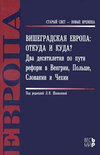
-
 Anglický jazyk
Anglický jazyk
Biological weapons
Autor: Source: Wikipedia
Source: Wikipedia. Pages: 114. Chapters: Ames strain, Anthrax, Argentine hemorrhagic fever, Big Five Weapons, Biological agent, Bolivian hemorrhagic fever, Botulism, Brucellosis, Bundibugyo ebolavirus, Bundibugyo virus, Chikungunya, Cholera, Coccidioidomycosis,... Viac o knihe
Na objednávku, dodanie 2-4 týždne
26.91 €
bežná cena: 29.90 €
O knihe
Source: Wikipedia. Pages: 114. Chapters: Ames strain, Anthrax, Argentine hemorrhagic fever, Big Five Weapons, Biological agent, Bolivian hemorrhagic fever, Botulism, Brucellosis, Bundibugyo ebolavirus, Bundibugyo virus, Chikungunya, Cholera, Coccidioidomycosis, Coxiella burnetii, Defoliation bacilli bomb, Eastern equine encephalitis virus, Ebola virus, Epidemic typhus, Filoviridae, Francisella tularensis, Glanders, Hantavirus, Huda Salih Mahdi Ammash, Lassa fever, Lassa virus, Lloviu cuevavirus, Lloviu virus, Magnaporthe grisea, Marburgvirus, Marburg marburgvirus, Marburg virus, Marburg virus disease, Mary S. Sherman, Melioidosis, Mononegavirales, Newcastle disease, Phytophthora infestans, Plague (disease), Psittacosis, Q fever, Ravn virus, Reston virus, Rift Valley fever, Rihab Taha, Rinderpest, Rocio viral encephalitis, Shigella, Sudan ebolavirus, Sudan virus, Swine brucellosis, Taï Forest ebolavirus, Taï Forest virus, Tularemia, Venezuelan equine encephalitis virus, Western equine encephalitis virus, Yellow fever. Excerpt: Plague is a deadly infectious disease that is caused by the enterobacteria Yersinia pestis, named after the French-Swiss bacteriologist Alexandre Yersin. Primarily carried by rodents (most notably rats) and spread to humans via fleas, the disease is notorious throughout history, due to the unrivaled scale of death and devastation it brought. Until June 2007, plague was one of the three epidemic diseases specifically reportable to the World Health Organization (the other two being cholera and yellow fever). Depending on lung infection, or sanitary conditions, plague also can be spread in the air, by direct contact, or by contaminated undercooked food or materials. The symptoms of plague depend on the concentrated areas of infection in each person: such as bubonic plague in lymph nodes, septicemic plague in blood vessels, pneumonic plague in lungs, and so on. It is treatable if detected early. Plague is still endemic in some parts of the world. The epidemiological use of the term "plague" is currently applied to bacterial infections that cause buboes, although historically the medical use of the term "plague" has been applied to pandemic infections in general. Plague is often synonymous with "bubonic plague" but this describes just one of its manifestations. Other names have been used to describe this disease, such as "The Black Plague" and "The Black Death"; the latter is now used primarily by scholars to describe the second, and most devastating, pandemic of the disease. The etymology of the word "plague" is believed to come from the Latin word plaga ("blow, wound") and plangere ("to strike, or to strike down"), cf. German Plage ("infestation"). The Oriental rat flea (Xenopsylla cheopsis) engorged with blood after a blood meal. This species of flea is the primary vector for the transmission of Yersinia pestis the organism responsible for bubonic plague in most plague epidemics in Asia, Africa, and South America. Both male and female fleas feed on blood and can trans
- Vydavateľstvo: Books LLC, Reference Series
- Rok vydania: 2014
- Formát: Paperback
- Rozmer: 246 x 189 mm
- Jazyk: Anglický jazyk
- ISBN: 9781157591382





 Nemecký jazyk
Nemecký jazyk 
 Ruský jazyk
Ruský jazyk 




